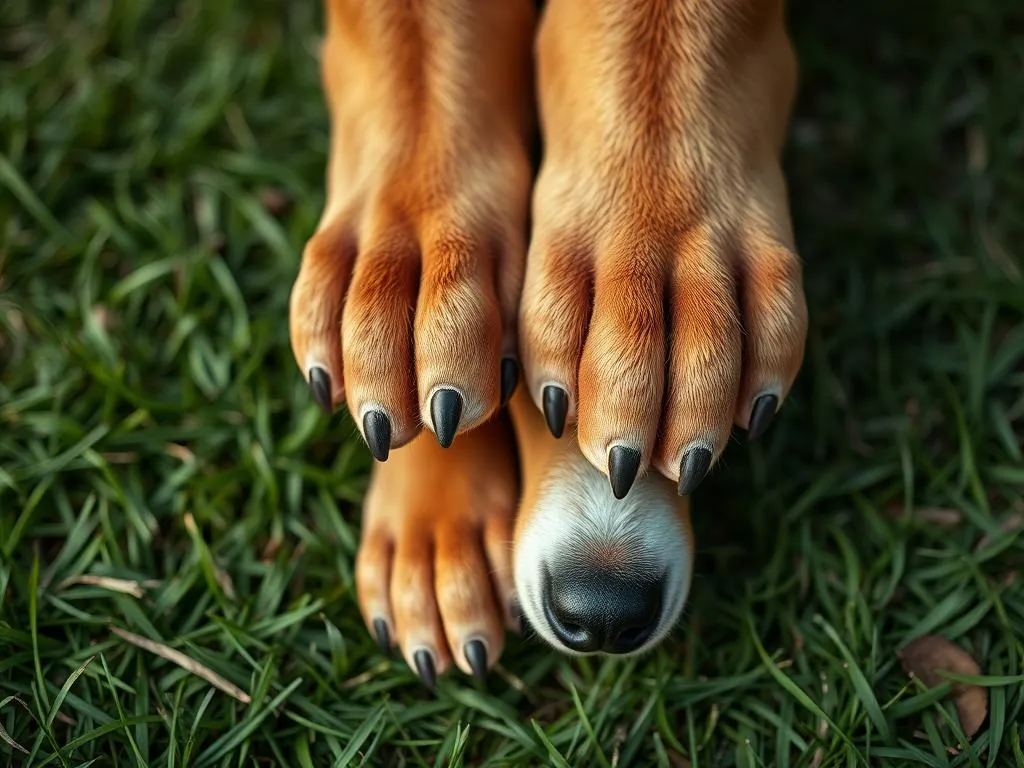
Understanding the anatomy of dogs is essential for pet owners who wish to provide the best care for their furry friends. One of the most intriguing aspects of canine anatomy is the structure of their limbs, particularly their toes. The question arises: how many toes do dogs have? This article delves into the fascinating world of dog anatomy, exploring the number of toes dogs possess, their evolutionary background, the variations among different breeds, and the significance of toes for canine health.
Canine Anatomy Basics
Overview of Dog Anatomy
Dogs are remarkable creatures with a complex anatomy that enables them to run, jump, and play. Their limbs are structured for agility and endurance, consisting of bones, muscles, and joints that work in harmony. A crucial part of this structure is the toes, which provide balance and traction. Each paw typically has a specific arrangement of toes that contributes to the dog’s overall mobility and ability to perform various activities, such as running and climbing.
Evolution of Canine Limbs
Throughout history, dogs have evolved from their wild ancestors, adapting their limbs for survival. Early canines, like wolves, had paws designed for traversing rough terrains, which has influenced the anatomy of modern breeds. Comparing dogs with other animals, such as cats or horses, reveals fascinating adaptations in limb structure that cater to different lifestyles. Understanding this evolutionary perspective helps us appreciate the functionality of a dog’s toes and their role in mobility.
The Number of Toes on Dogs
Standard Toe Count in Dogs
Most dogs have a total of 18 toes—five on each front paw and four on each back paw. This standard toe count allows for optimal balance and grip while running or playing. The front paws are especially important for providing stability and support, while the back paws contribute to propulsion.
The Role of Dewclaws
In addition to the standard toe count, many dogs possess dewclaws, which can be found on the inner side of the front legs, and sometimes on the back legs. Dewclaws are often considered vestigial; they serve minimal function in modern dogs but can help with stability and grip. Some breeds may have double dewclaws, while others may lack them altogether. The presence and function of dewclaws can vary widely across different breeds.
Variations Across Different Breeds
Common Breeds and Their Toe Count
While the standard number of toes is 18, some breeds may exhibit unique characteristics. For instance, the Great Pyrenees often has double dewclaws, resulting in a total of 20 toes. On the other hand, breeds like the Dachshund might have a more pronounced need for their toes due to their specific body structure and mobility requirements.
Genetic Factors Influencing Toe Count
Genetic factors can lead to variations in toe count among dogs. Some breeds may experience congenital anomalies that result in fewer or more than the standard number of toes. Additionally, certain orthopedic conditions can affect toe development, leading to complications that may require veterinary intervention. Understanding these genetic influences can help pet owners recognize and address potential health issues.
Rare Cases and Anomalies
In rare instances, dogs may be born with fewer or more than the usual number of toes. Some dogs may have polydactylism, a condition where they possess an extra toe. This situation can lead to both advantages, like enhanced grip, and disadvantages, such as potential discomfort or injury. Such anomalies highlight the diversity of canine anatomy and emphasize the importance of regular veterinary check-ups.
Importance of Toes for Canine Health
Functionality of Toes in Dogs
Toes play a critical role in a dog’s ability to move efficiently. The structure of the toes aids in balance, allowing dogs to navigate various terrains and engage in playful activities. Without healthy toes, a dog’s mobility could be severely impacted, affecting their overall quality of life.
Common Toe-Related Issues
Dog owners should be aware of common toe-related issues that can arise, such as broken toes, infections, and nail-related problems. Injuries can occur during play or walks, and infections may develop from cuts or foreign objects lodged between the toes. Regular inspections of your dog’s paws can help identify potential issues early on.
Prevention and Care Tips
Maintaining toe health is essential for your dog’s overall well-being. Here are some tips for keeping your dog’s toes in good condition:
– Regularly check for injuries: Inspect your dog’s paws for any signs of injury or infection.
– Keep nails trimmed: Overgrown nails can lead to discomfort and injuries, so regular trimming is essential.
– Provide proper exercise: Engaging your dog in regular exercise helps promote healthy muscles and joints.
– Consult your veterinarian: Regular check-ups can help identify any health issues before they become serious.
Fun Facts About Dog Toes
Unique Features of Dog Toes
Dog toes differ significantly from human toes, primarily in structure and function. While humans have a more pronounced arch that supports upright walking, dogs have a more horizontal design that aids in sprinting and jumping. The pads on a dog’s toes also provide cushioning and protection, enhancing their ability to traverse various surfaces.
Cultural Significance of Dog Toes
Throughout history, dog anatomy, including their toes, has been steeped in cultural significance. Many cultures attribute various myths and beliefs to dogs and their physical features. For instance, in some traditions, having a dog with a certain number of toes is considered a sign of good luck, while others may view it as an omen.
Trivia: Dogs and Their Toes in Pop Culture
Dogs and their toes have made appearances in various forms of media, from films to literature. Iconic characters like Snoopy and Scooby-Doo often showcase exaggerated features, including their paws, adding a whimsical touch to their personalities. These representations remind us of the endearing nature of dogs and their unique anatomical features.
Conclusion
Understanding how many toes dogs have is just one aspect of the fascinating world of canine anatomy. With a standard count of 18 toes, including the role of dewclaws, dog owners can appreciate the significance of these structures in their pets’ mobility and health. By recognizing the variations across different breeds and the importance of toe care, pet owners can ensure their dogs lead happy and healthy lives. Observing and caring for your dog’s toes is not just about aesthetics; it is a crucial element of their overall well-being.
FAQs
Q1: Do all dog breeds have the same number of toes?
A1: While most dogs have 18 toes, variations exist among breeds. Some breeds may have double dewclaws or other anomalies that affect their toe count.
Q2: Can dogs live with missing toes?
A2: Yes, dogs can adapt to living with missing toes, although it may affect their balance and mobility. Proper care and adjustments can help them lead a fulfilling life.
Q3: What should I do if I notice an injury on my dog’s toes?
A3: If you notice an injury, clean the area gently and monitor it for signs of infection. If the injury appears severe or does not improve, consult your veterinarian.
Q4: How do I trim my dog’s toenails safely?
A4: Use dog-specific nail clippers and be cautious not to cut into the quick. If you’re unsure, consider having a professional groomer or veterinarian assist you.
Q5: Are there any special considerations for older dogs regarding their toes?
A5: Older dogs may experience arthritis or other conditions affecting their toes. Regular check-ups and appropriate cushioning can enhance their comfort and mobility.









